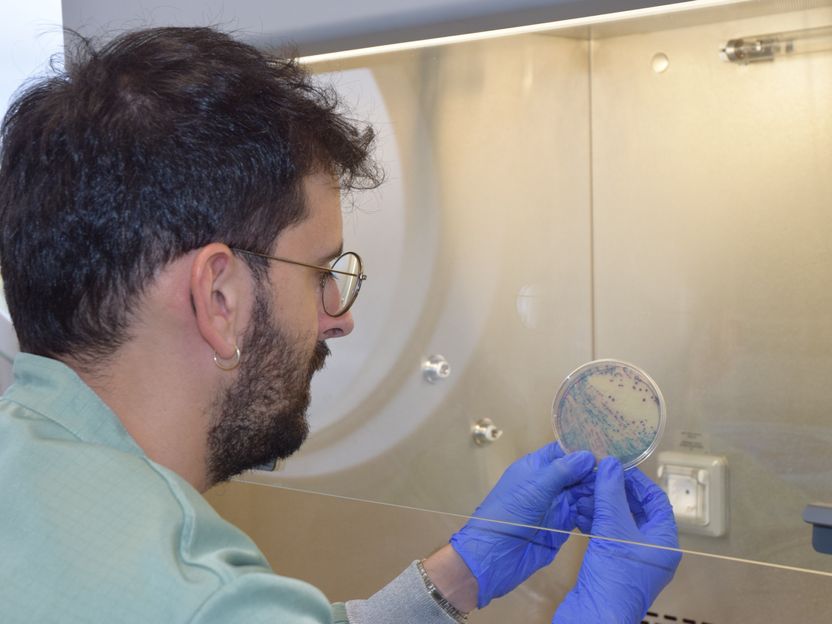How antibiotic-resistant bacteria evolve in the gut of hospitalized patients
Study shows the importance of integrating genetic diversity in the surveillance and diagnosis of antibiotic-resistant strains
Advertisement
A team led by scientists from the Spanish National Research Council (CSIC) has analyzed how antibiotic-resistant bacteria evolve in the gut of hospitalized patients in real time. The results, published in Nature Ecology and Evolution, demonstrate the importance of integrating evolutionary concepts, such as genetic diversity, into surveillance and diagnostic programs for antibiotic-resistant strains. The study also highlights the impact of plasmids, extrachromosomal DNA fragments, on the physiology of these bacteria.

CNB-CSIC researcher Javier de la Fuente observes a Petri dish with bacteria in his laboratory.
Susana de Lucas
The ability of bacteria to evolve in response to antibiotic treatments has driven the emergence and spread of resistance factors, a fact of particular concern in clinical settings. It is becoming increasingly difficult to find effective treatments that can cure patients colonized with resistant bacteria.
This new work, carried out by teams from the Centro Nacional de Biotecnología (CNB-CSIC) in collaboration with the Centro de Investigación Biológica en Red de Epidemiologia y Salud Pública (CIBERESP) of the Instituto de Salud Carlos III; the Instituto Ramón y Cajal de Investigación Sanitaria (IRYCIS); the University of Zurich (Switzerland), and the Institut Pasteur (France), has focused on plasmids, which allow unrelated bacteria to share antibiotic resistance genes.
Álvaro San Millán, CSIC researcher at the Centro Nacional de Biotecnología (CNB-CSIC) explains: "In hospital environments, bacteria carrying resistance plasmids are able to jump between different hospitalized patients by colonizing their intestinal microbiota. We have seen how plasmids allow bacteria to evolve rapidly within patients," says San Millán.
For Javier de la Fuente, researcher at CNB-CSIC and first author of the study, this collaboration with IRYCIS "has allowed us to see how the bacteria behave beyond the test tube, analyzing the bacteria in their real ecosystem: the intestine of the patients". "Our data show how they evolve and adapt to antibiotic treatments administered to patients, in a real clinical situation," he adds.
Rafael Cantón, head of the Microbiology Service at the Ramón y Cajal University Hospital and also an author of the paper, emphasizes: "The study is part of a European surveillance project for the detection of multidrug-resistant bacteria in hospitals called RGNOSIS, which integrates data from more than 9,000 patients. Projects of this type are essential to help us understand and stop the spread of antibiotic resistance".
Note: This article has been translated using a computer system without human intervention. LUMITOS offers these automatic translations to present a wider range of current news. Since this article has been translated with automatic translation, it is possible that it contains errors in vocabulary, syntax or grammar. The original article in Spanish can be found here.
Original publication
Javier DelaFuente, Laura Toribio-Celestino, Alfonso Santos-López, Ricardo León-Sampedro, Aida Alonso-del Valle, Coloma Costas, Marta Hernández-García, Lun Cui, Jerónimo Rodríguez-Beltrán, David Bikard, Rafael Canton, Alvaro San Millan; "Within-patient evolution of plasmid-mediated antimicrobial resistance."; Nature Ecology and Evolution.
























































